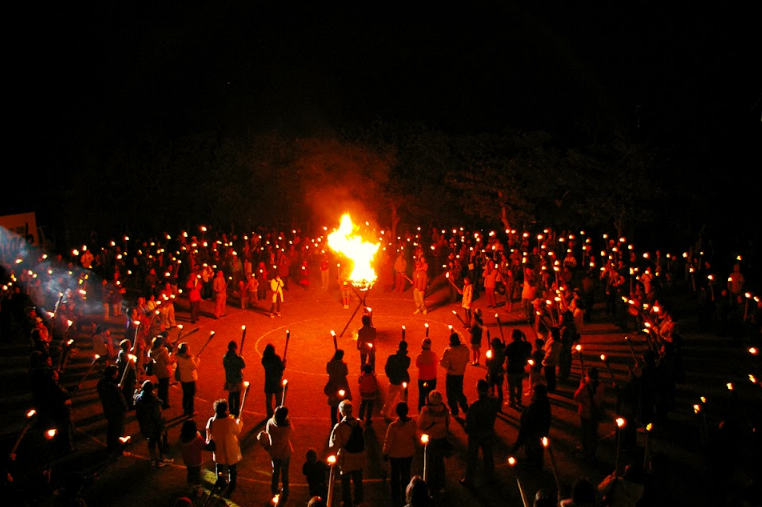Location: At the Tōya of the year in Ōmuda, Ōdō, Hōfu City, Yamaguchi Prefecture
Date: Held annually on the first Sunday of December
Access:
- Train: Approximately 30 minutes on foot from JR Sanyo Main Line Ōdō Station
- Car: 15 minutes by car from Hofu Nishi IC on the Sanyo Expressway
http://www.city.hofu.yamaguchi.jp/site/kankou-site/waraikou.html (Official Hōfu City Website)
The Warai-Kō is also known as the “most unusual festival in Japan” and has been designated as an intangible folk cultural property of Hōfu City. It is a Shinto ritual passed down in the Ōmuda district of Ōdō, Hōfu City. With a history of over 800 years, it is a very rare and traditional ritual that continues to this day.
According to the shrine’s tradition at Komata Hachiman Shrine, the festival dates back to the first year of Genji (1199) during the Kamakura period. Originally, this festival was an agricultural celebration held on the first day of the 12th month of the lunar calendar to welcome Ōtoshi-gami, the god of agriculture, and to express gratitude for the year’s harvest and pray for a good harvest in the coming year.
The Warai-Kō is inherited by 21 families through hereditary succession. Each year, one family takes on the role of Tōya, the host, and gathers everyone at their place. First, all participants sit down together for a ceremonial meal with sacred sake and light refreshments. After that, the priest of Komata Hachiman Shrine declares the “laughter ceremony.”
Two large branches of sakaki (sacred tree) placed in front of the shrine are handed to two participants, one representing the upper seat and one the lower seat. They laugh loudly three times, saying, “Ha-ha-ha-ha-ha-ha-ha-ha-ha-ha.”
The three rounds of laughter represent: the joy of the current year’s harvest for the first, a wish for next year’s good harvest for the second, and the desire to forget this year’s sorrows and hardships for the third. The laughter is repeated by pairs, eventually involving all participants. If the laughter is not loud enough or appears insincere, they may be asked to do it again.
At first glance, this ritual may seem quite strange, but it is a traditional event with a deep historical background. It is well worth witnessing at least once.






















